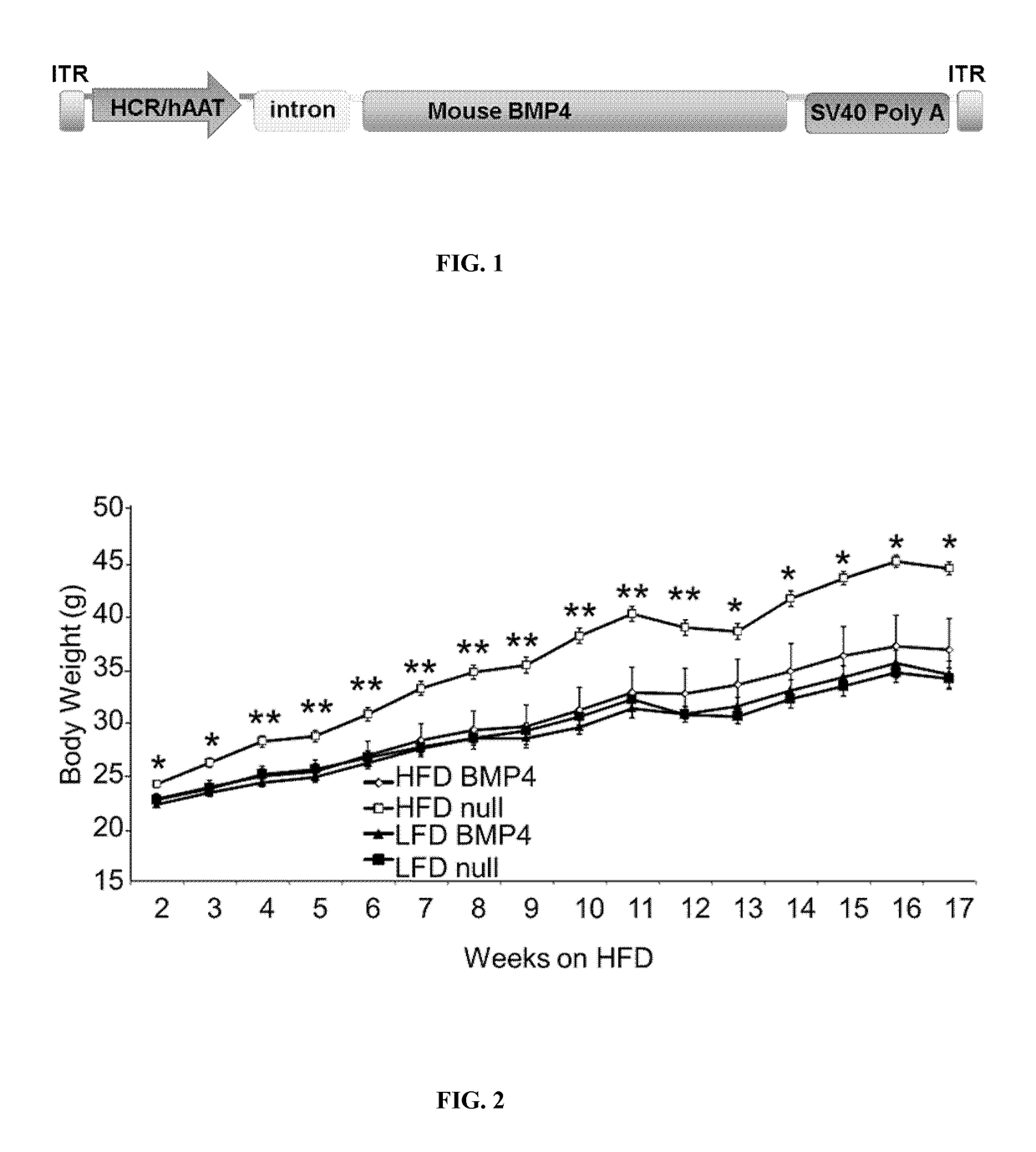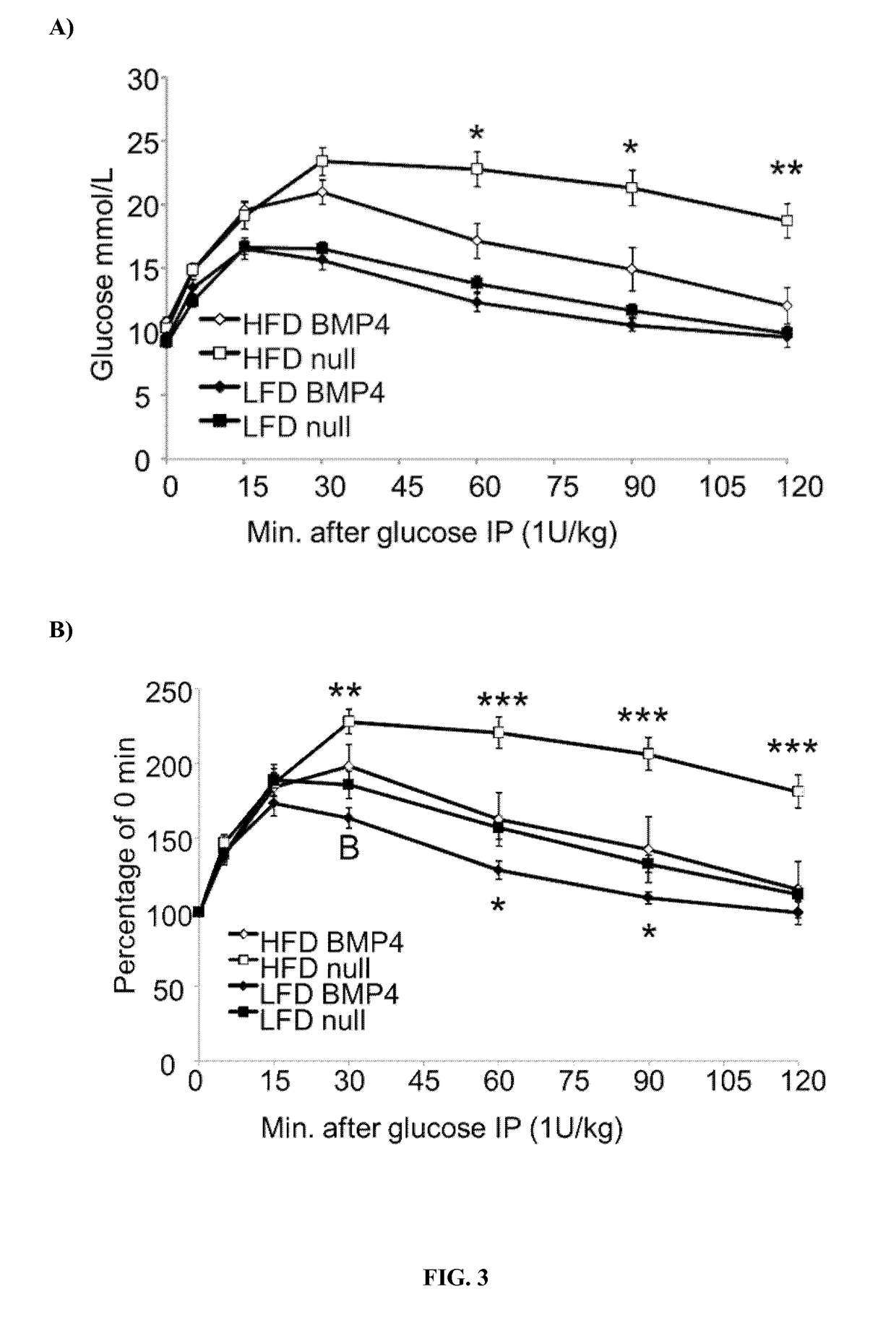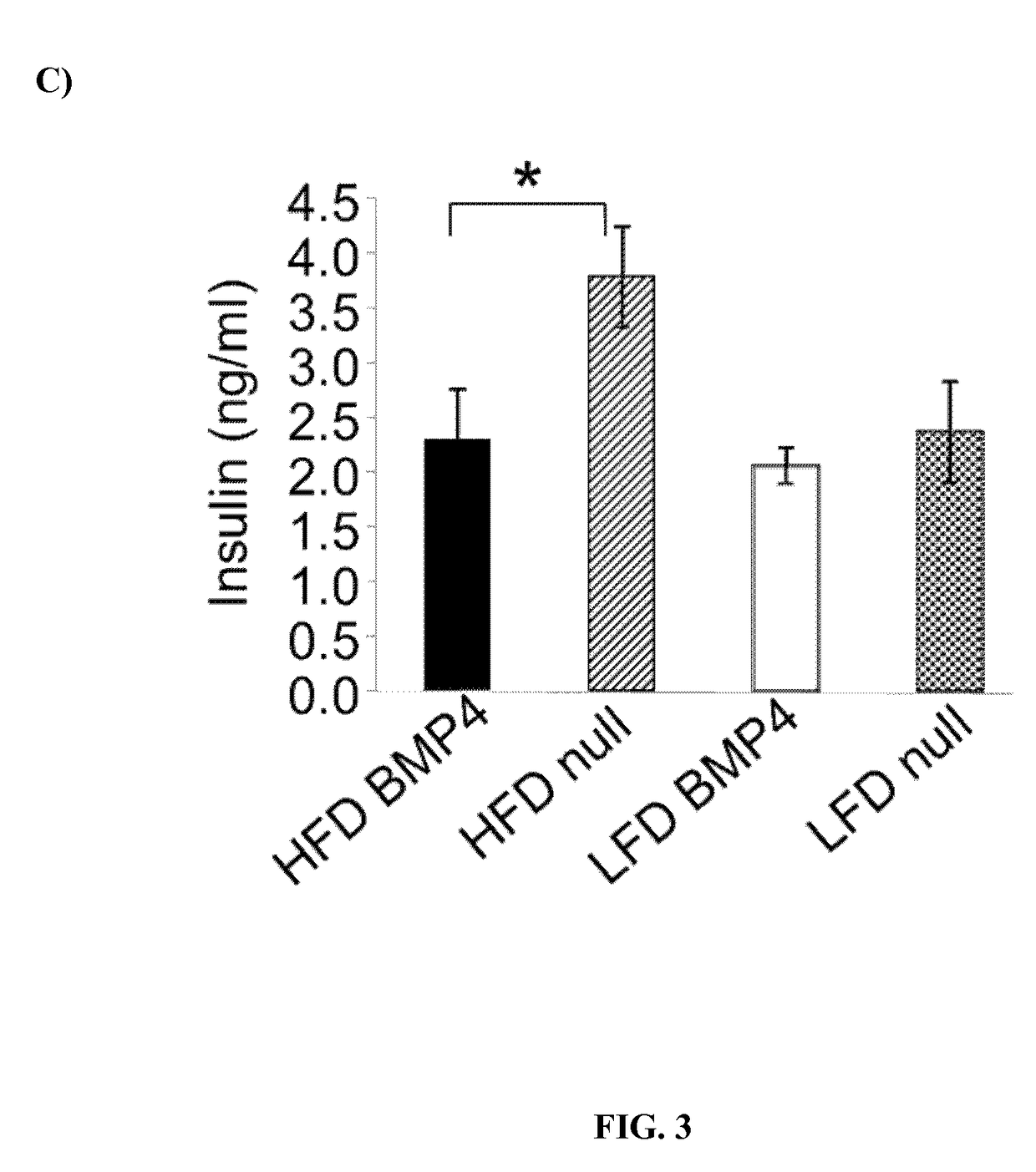Adeno-Associated Viral Vectors for the Gene Therapy of Metabolic Diseases
a technology of metabolic diseases and adenoviruses, applied in the field of gene therapy, can solve the problems of only being able to apply to a minority of patients, anti-obesity drugs often display important side effects, and metabolic syndrome is a global health problem
- Summary
- Abstract
- Description
- Claims
- Application Information
AI Technical Summary
Benefits of technology
Problems solved by technology
Method used
Image
Examples
example 1
HFD-BMP4 Mice Gain Less Weight than HFD-Null Throughout the Study, Despite Similar Food Intake
[0212]Mice fed with a high fat diet (HFD) or with a low fat diet (LFD) were injected either with AAV expressing BMP4 or with AAV null and were weighted weekly during the whole study. Results showed that the BMP4 high fat-fed mice had a similar food intake as the null high fat-fed mice but they increased less in body weight suggesting increased energy expenditure (FIG. 2). No difference was seen in the chow-fed groups.
example 2
HFD-BMP4 Mice are More Glucose Tolerant and have Lower Circulating Insulin Levels than HFD-Null Mice, Comparable to LFD-Fed Mice
[0213]At study week 11 a glucose tolerance test was performed by intraperitoneal glucose injection in mice after four hours of fasting. Tail blood glucose was measured at baseline and at different times after glucose injection. The BMP4 high fat fed-mice had an improved glucose tolerance compared to the null high fat fed-mice both when expressed as absolute glucose levels (FIG. 3A) or as percentage of initial fasting level (FIG. 3B). In fact, they had a similar glucose tolerance as chow-fed null mice but even in the chow-fed group the BMP4 mice had a better glucose tolerance (FIG. 3B).
[0214]Circulating insulin levels were measured 15 minutes post-glucose injection. Consistent with an improved insulin sensitivity, the BMP4 high fat-fed mice had lower insulin levels than null high fat-fed mice (FIG. 3C). HFD BMP4 insulin levels are comparable to those obtaine...
example 3
HFD-BMP4 Mice are More Insulin Sensitive than HFD-Null Mice, Comparable to LFD-Fed Mice
[0215]At study week 12 an insulin tolerance test was performed by intraperitoneal insulin injection in mice after four hours of fasting. Tail blood glucose was measured at baseline and at different times after insulin injection. The insulin tolerance tests clearly showed that the BMP4 high fat-fed mice were more insulin sensitive measured as the ability of a given insulin dose to lower the blood glucose levels (FIG. 4A). This was also seen when the insulin effect was related to the fasting glucose levels expressed as percentage of initial glucose level (FIG. 4B). Again, the BMP4 high fat-fed mice behaved similar to the chow-fed and considerably leaner mice.
PUM
| Property | Measurement | Unit |
|---|---|---|
| real time RT- | aaaaa | aaaaa |
| body weight | aaaaa | aaaaa |
| time | aaaaa | aaaaa |
Abstract
Description
Claims
Application Information
 Login to View More
Login to View More - Generate Ideas
- Intellectual Property
- Life Sciences
- Materials
- Tech Scout
- Unparalleled Data Quality
- Higher Quality Content
- 60% Fewer Hallucinations
Browse by: Latest US Patents, China's latest patents, Technical Efficacy Thesaurus, Application Domain, Technology Topic, Popular Technical Reports.
© 2025 PatSnap. All rights reserved.Legal|Privacy policy|Modern Slavery Act Transparency Statement|Sitemap|About US| Contact US: help@patsnap.com



